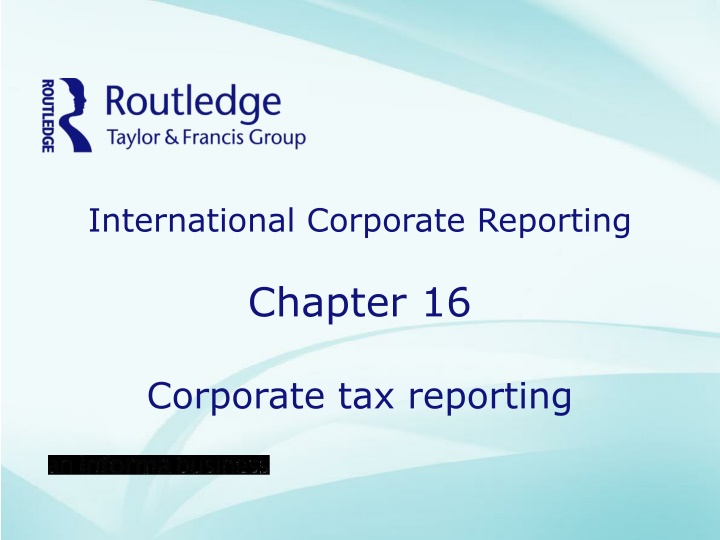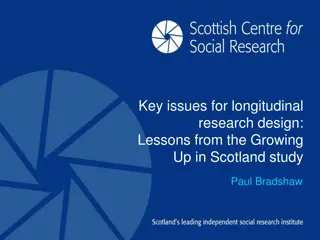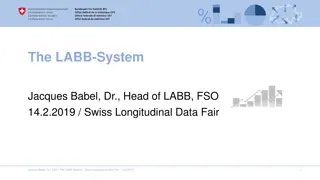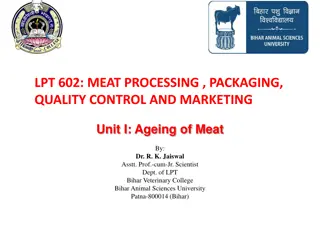
Longitudinal Ageing Study in India: LASI Project Overview
LASI is a comprehensive study supported by the Government of India, Ministry of Health and Family Welfare (MoHFW), and international institutions like NIA/NIH, USA, and UNFPA. It focuses on the ageing population in India, covering health, economics, and social aspects through innovative methodologies and technology
Download Presentation

Please find below an Image/Link to download the presentation.
The content on the website is provided AS IS for your information and personal use only. It may not be sold, licensed, or shared on other websites without obtaining consent from the author. If you encounter any issues during the download, it is possible that the publisher has removed the file from their server.
You are allowed to download the files provided on this website for personal or commercial use, subject to the condition that they are used lawfully. All files are the property of their respective owners.
The content on the website is provided AS IS for your information and personal use only. It may not be sold, licensed, or shared on other websites without obtaining consent from the author.
E N D
Presentation Transcript
International Corporate Reporting Chapter 16 Corporate tax reporting
Tax base The economic measure that is used in a tax jurisdiction as the starting point for raising taxation. Could be assets, income earned, investment income, the profits of a business, sales, or the labour costs. For this chapter the tax base is the profit reported by a company. Profit reported for tax purposes may not always be the same as that reported for accounting.
Taxable profits and accounting profits may differ Rules for taxable profit may cover: depreciation of tangible non-current assets; valuation of inventory; treatment of interest payments; treatment of trading losses; treatment of cost of intangible assets; treatment of investment income; or income from intangible assets.
UK First 200K 100% Above that 18% pa on reducing balance. Assets of useful life over 25 years 8% pa on reducing balance No tax depreciation Germany Between 6 and 12.5% pa depending on type of asset, on a straight line basis Sweden Choice of 20% pa on straight line or 30% pa on reducing balance Plant and machinery Annual tax depreciation Factory buildings 3% pa on a straight line basis Cost determined on FIFO or LIFO basis Carry forward without restriction of time but cannot reduce profits in any year to below 40% 4% Pa straight line basis Cost determined on FIFO basis Carry forward without restriction of time Inventories Cost determined on FIFO basis Set off in year of loss against other income. Carry forward to set off against trading income without restriction of time but cannot reduce profits below 50% No amortisation for goodwill. Other intangibles: accounting amortisation allowed for tax purposes Trading losses Intangible assets; acquired at cost Annual tax amortisation Goodwill over 15 year Other intangibles over between 5 to 10 years Choice of 20% pa on straight line or 30% pa on reducing balance
Tax on company profits Relatively minor percentage of total tax revenue in a country, but may be politically significant
Percentage components of tax revenue, 2016 Country Tax on income of individ uals 23.8 Tax on company profits Social security contribs Tax on property Taxes on consumpti on (incl VAT) Other taxes 9.0 26.2 5.7 32.7 2.6 OECD average 18.8 26.6 18.6 27.4 4.5 5.2 12.0 8.3 36.8 37.6 40.4 18.9 9.4 2.8 8.3 12.6 24.4 27.1 20.4 32.3 6.2 0.6 0.3 0.5 France Germany Japan United Kingdom 40.3 7.6 24.0 11.1 16.9 0.0 United States
Relative to gross domestic product Tax on company profits as a % of GDP 2000 2010 2016 OECD average 3.2 2.7 2.9 France 3.0 2.3 2.0 Germany 1.5 1.5 2.0 Japan 5.5 3.1 3.7 United Kingdom 3.5 2.9 2.7 United States 2.2 1.8 2.0
Corporate tax rates Statutory rates set out in legislation ( statute ) to be applied to the specific tax base of the country. The term nominal rate is also used. National governments will impose a statutory rate of tax on company profits but in some countries lower tiers of government will also raise tax on company profits. This local or regional tax may vary between areas or regions in the same country.
National (statutory) rates of tax on company profits Country % China 25 France* 33.33 Germany 15 Japan 23.2 UK 19 US 21 * Tax rate planned to reduce each year until 2022 when it will be 25%
Corporate tax rates (contd) National effective rate of tax Combines the statutory tax rate with the rules for calculating taxable profits. Together, these affect the proportion of tax payable on accounting profit in the country as a whole. Individual company effective rate of tax the actual tax charged in the income statement as a percentage of the company s profits.
National effective rate of tax Country Profit tax 2010 % 8.8 6.7 19.2 26.9 23.6 27.8 2018 % China France Germany Japan United Kingdom United States 11.1 0.7 23.2 24.6 18.1 27.9* * Does not take in Trump reforms, reducing federal rate from 35% to 21%
IAS 12 Accounting for income taxes Timing of tax payments may not match precisely the timing of the activities giving rise to the tax. Taxation liabilities to be paid later, and taxation assets to be recovered later. If due shortly after the reporting date, classed as current taxation. If due further into the future, classed as deferred taxation.
IAS 12 (contd) IAS 12 sets out principles to be applied. Definition of income taxes depends on the tax legislation of a country Requirements to account for tax consequences of transactions and other events in a manner consistent with the accounting treatment of the transactions and other events themselves. Comparative research has indicated variations in practice and a need to improve some aspects of the standard.
IAS 12 disclosure requirements Major components of tax expense (or income) should be disclosed separately. These may include: current tax expense or income; deferred tax expense or income relating to temporary timing differences; deferred tax expense or income relating to changes in tax rates or new taxes; other changes to previously reported tax expense or income; and an explanation of the relationship between tax expense and accounting profit.
Tax expense and accounting profit a numerical reconciliation comparing the actual tax expense and the expected tax expense (calculated by multiplying the accounting profit by the applicable statutory tax rate), and/or a numerical reconciliation comparing the effective tax rate (i.e. tax expense divided by accounting profit), and the applicable statutory tax rate. Analysts comment when unusually low or high.
tax as % of pre-tax profit m Profit before tax Expected income tax expense/statutory tax rate Effect of different rates of tax on overseas income 205,000 61,500 30.00% -8,200 -4.00% Reduction in tax due to tax-free income Increase in tax due to non-deductible expenses Current year s tax losses unlikely to be usable -250 -0.12% 450 0.22% 200 0.10% Effect of prior year adjustments Net deferred tax adjustment Actual income tax expenses/effective rate of tax -100 500 -0.05% 0.24% 54,100 26.39%
Deferred taxation IAS 12 Tax effects of temporary differences between the carrying amount of an asset or liability in the statement of financial position and its tax base. Deferred liabilities -tax treatment for an expense is accelerated compared to the accounting treatment. Deferred assets -tax treatment for a source of income is accelerated compared to the accounting treatment. Identify all temporary differences. Measure temporary difference at the statutory tax rates that are expected to apply when the tax liability will be settled or the tax assets will be realised in the future. The future values should not be discounted.
Deferred taxation US GAAP Under US GAAP a deferred tax asset would be recorded in full, followed by a valuation allowance for any portion of the asset likely not to be realised. Under IAS 12 the deferred tax assets are recognised to the extent that it is probable that sufficient taxable profits will be available to recover the asset in future. The net effect of both approaches is similar.
Territorial or worldwide tax base Territorial principle means that a country s tax authorities will not tax the earnings of domestic companies made outside a country s domestic boundaries. Worldwide principle claims the right to tax income earned outside their boundaries when earned by an entity based in the country. Trend is away from worldwide to territorial in order to avoid double taxation of profits. Risks abuse through profit shifting to low tax regime.
Tax avoidance by MNCs Profit maximising MNCs may attempt to reduce their total group worldwide tax liability, taking advantage of difference in national tax rules and rates. Countries will often compete to offer tax advantages to companies in order to attract inward investment and to generate nation wealth.
Tax avoidance methods The methods of tax avoidance by MNCs include the following: Profit shifting strategy Transfer pricing Corporate debt-equity Payments for intangibles Shell holding companies Company-specific tax rulings
Base erosion and profit shifting BEPS Base erosion takes place when countries offer favourable tax treatment of expenses and revenues so reducing the level of profits that are being subject to a charge to tax. Profit shifting takes place when a taxpayer artificially moves profits from a country in which the economic activity takes place to lower or no- tax countries.
Tax haven Characterised by: lack of effective exchange of relevant information with other governments; no or minimal taxation on income and assets of non-residents; and generally not applying accepted minimum standards of corporate governance and accountability.
OECD BEPS project Concerns about base erosion are addressed in the OECD s BEPS project, which aims to encourage international cooperation where countries will play by an agreed set of rules and to limit unfair competition between countries and opportunity for exploitation by companies. OECD report (2015) identified 15 projects that required action plans, some at the level of national jurisdiction and others at individual company level.
Transfer pricing aligned with value creation OECD suggests five approaches: Comparable uncontrolled price (CUP) method Resale price method Cost plus method Transactional net margin method Transactional profit split method
Actions by national tax authorities Adjust transfer pricing if abuse can be identified. Annual documentation obligation on MNCs to justify arm s length compliance. Transfer price tax audits. Share transfer pricing documentation under double-taxation agreements. Advance Pricing Agreement provides prospective agreement with taxpayer Information only emerges where there is a dispute.
Country-by-country reporting The national authorities collect disaggregated information on a country-by-country basis from MNCs headquartered within their borders and then makes this information available on a confidential basis to other national authorities. OR At a national level, information is collected from individual companies undertaking activities within their borders, and then made publicly available on a company-by-company basis through a national website. OR MNCs are required to make country-by-country information publicly available in periodic reports. This expands considerably on the traditional accounting-based geographic segmental reporting.
Confidential exchange by tax authorities BEPS Action Plan was adopted by the OECD and G20 countries in 2013. By 2018 the OECD reported progress in countries across the world, sharing information with other tax authorities through information exchange agreements OECD. Information remains confidential but helps tax authorities identify transfer pricing risks and target audit resources.
Public disclosure by national bodies Extractive Industries Transparency Initiative (EITI). Voluntary. Each country decides on an information matrix of information to be made publicly available to improve the debate about the management and use of a country s natural resources. Amounts paid by companies are reconciled to the amounts received by government. Companies report to the EITI Country Program using the relevant program s template. No public disclosure by the company itself. At March 2019 there were 52 countries involved but US and Saudi Arabia were not members.
Public disclosure by companies Financial sector and the extractive industries. EU regulation via directives, requiring mining and forestry companies to report taxes, royalties and bonuses they pay worldwide. US Dodd-Frank Wall Street Reform planned for implementation 2016, withdrawn by President Trump 2017. Strong industry lobbying. Canadian government has maintained country- by-country requirements for extractive sector.
EU Directive financial institutions For financial institutions, Capital Requirements Directive. Report annually for each country in which there is an establishment: nature of activities turnover number of employees profit or loss before tax tax on profit or loss and public subsidies received. Aim to restore trust after banking crisis, show responsibility to stakeholders and society.
EU and extractive industries Companies in oil, gas, mining or logging must report the following types of payments: production entitlements taxes on income, production or profits royalties dividends signature, discovery and production bonuses licence fees, rental fees, entry fees and other considerations for licences and/or concessions payments for infrastructure improvements.
Evaluating progress European Commission 2018 found no evidence that the reporting requirements of the Directive put EU-based companies at a competitive disadvantage compared to companies from other countries. Some think absence of requirements in US creates a disadvantage for EU. Others think that disclosure might may enhance the reputation of the company, making them attractive to civil society and investors.
Research examples Range of corporate tax research review paper indicates theory and practice. Tax shifting evidence from tax rates based on financial statement data across many countries. Tax shifting evidence from investment activity based on data from annual reports in Germany when the tax rate changed significantly. Tax audit and transfer pricing data available from authorities in China.






















